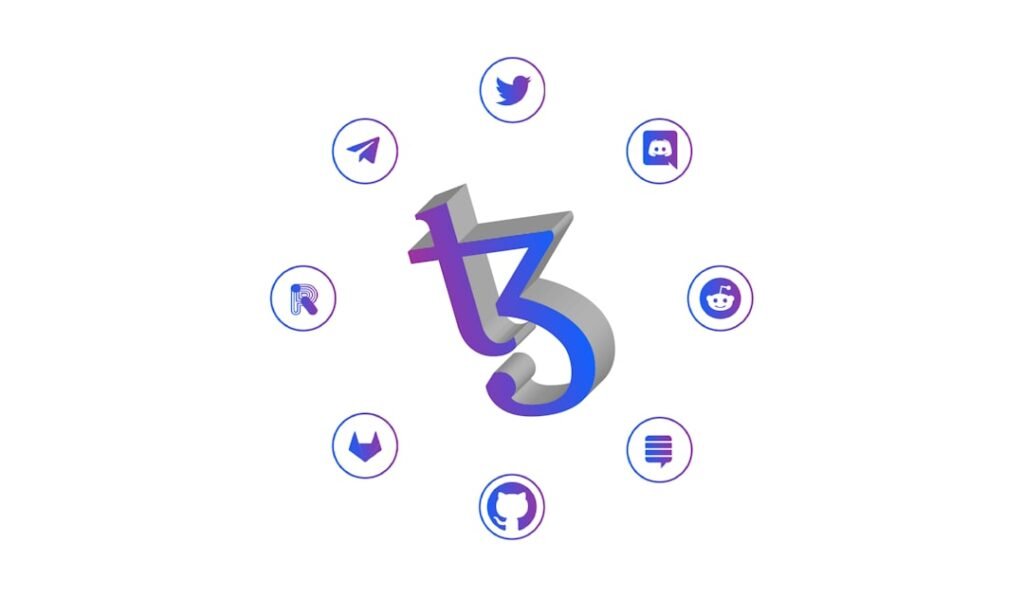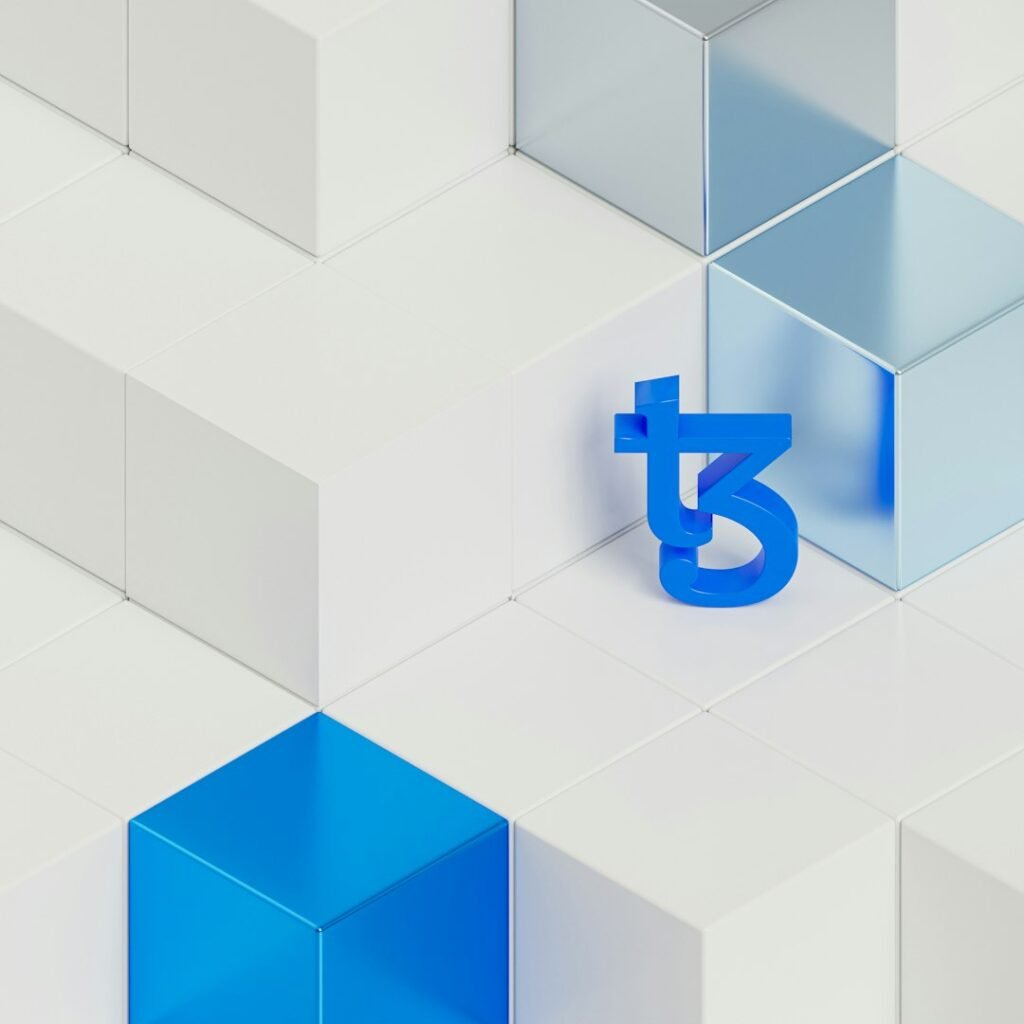The digital asset revolution is no longer on the horizon; it is here. From cryptocurrencies and NFTs to decentralized finance (DeFi) and tokenized real-world assets, the new economy runs on the blockchain. The gateway to this economy, for both individuals and institutions, is the blockchain wallet. It is the digital equivalent of a bank account, a brokerage, and a safe deposit box, all rolled into one.
For any business looking to enter the Web3 space, building a proprietary blockchain wallet is not just a technical project; it is a profound strategic move. A well-designed wallet can become the central hub for user engagement, creating a direct, trusted relationship in a decentralized world. However, the path from a simple idea to a secure, scalable, and user-friendly wallet is fraught with complexity.
This ultimate guide demystifies the entire blockchain wallet development lifecycle. We will dissect the process step-by-step, from foundational strategic decisions to a transparent analysis of the costs involved, providing you with the blueprint to build your gateway to the decentralized future.
Part 1: The Foundational Blueprint – Core Wallet Architecture
Before a single line of code is written, you must make fundamental architectural decisions that will define your wallet’s security model, user experience, and business logic. These choices are the bedrock of your project.
The Critical Divide: Custodial vs. Non-Custodial
This is the single most important decision you will make. It determines who holds the “private keys”—the secret cryptographic codes that grant access to the assets on the blockchain.
- Non-Custodial (Self-Custody) Wallets: The user has sole control and responsibility for their private keys. The philosophy is “your keys, your crypto.” This model champions decentralization and user sovereignty. Examples include MetaMask and Trust Wallet.
- Custodial Wallets: The business or a third party holds and manages the private keys on behalf of the user. This model offers a more traditional, user-friendly experience, similar to a digital bank. Examples include wallets on major exchanges like Coinbase or Binance.
Choosing between them involves a strategic trade-off.
| Feature | 非親権者の財布 | Custodial Wallet | Strategic Implication |
|---|---|---|---|
| Private Key Control | User holds the keys. | Business holds the keys. | Defines your entire security and trust model. |
| User Onboarding | More complex; requires users to securely back up a seed phrase. | Simple; familiar username/password login. | Lower friction for mainstream users, but less decentralized. |
| セキュリティ責任 | User is responsible for their own security. | Business is responsible for securing all user funds. | A breach in a custodial wallet can be catastrophic for the business. |
| Transaction Control | User signs and broadcasts transactions directly. | Business processes transactions on behalf of the user. | Custodial model may involve withdrawal limits or delays. |
| Account Recovery | Extremely difficult if the seed phrase is lost. | Simple password reset functionality. | Non-custodial recovery challenges are a major UX hurdle. |
| Regulatory Burden | Lower, as you are providing software, not holding funds. | Higher; you may be classified as a Money Service Business (MSB). | Custodial wallets require significant compliance infrastructure. |
Storage Strategy: Hot vs. Cold Wallets
This decision relates to how keys are stored in relation to the internet.
- Hot Wallets: Private keys are stored on a system that is connected to the internet (e.g., a mobile app, browser extension, or web server). They offer convenience and immediate access for frequent transactions.
- Cold Wallets: Private keys are stored completely offline on a device that is never connected to the internet (e.g., a hardware wallet like a Ledger or a paper wallet). They provide maximum security against online threats.
ベストプラクティス: Most professional solutions, especially custodial platforms, employ a hybrid approach. A small percentage of funds are kept in a hot wallet for liquidity and daily transactions, while the vast majority (95%+) are secured in an institutional-grade cold storage system.
Part 2: The Development Lifecycle – From Idea to App Store
With your architectural foundation set, you can proceed with a structured development process.
Phase 1: Discovery and Strategy (Weeks 1-2)
This phase is about defining the ‘what’ and ‘why’.
- Define Your Niche: Who is this wallet for? DeFi power users? NFT collectors? A specific enterprise use case? Your target audience dictates the feature set.
- Blockchain Selection: Which blockchain(s) will you support? Starting with an EVM-compatible chain like Ethereum, Polygon, or BNB Chain is common. Supporting non-EVM chains like Solana or Bitcoin adds complexity. A multi-chain strategy is essential for long-term relevance.
- Feature Prioritization: Use the MoSCoW method (Must-have, Should-have, Could-have, Won’t-have) to define your Minimum Viable Product (MVP).
Phase 2: UI/UX Design and Prototyping (Weeks 3-5)
In Web3, trust is built through clarity and simplicity.
- User Flow Mapping: Design intuitive journeys for critical actions: wallet creation, seed phrase backup, sending/receiving assets, and connecting to DApps.
- Wireframing & Prototyping: Create low-fidelity wireframes to structure the layout, followed by high-fidelity, interactive prototypes (using tools like Figma) that simulate the final user experience. The goal is to identify and solve usability issues before development begins.
Phase 3: Backend Development and Blockchain Integration (Weeks 6-12)
This is the core engineering phase where the wallet’s engine is built.
- Wallet Core Logic: Implement the logic for generating private keys, public keys, and wallet addresses according to blockchain standards (e.g., BIP-39 for mnemonic phrases, BIP-44 for hierarchical deterministic wallets).
- Blockchain Node Interaction: Connect your application to the blockchain network. You can either run your own nodes (high cost, high control) or use a Node-as-a-Service (NaaS) provider like Alchemy, Infura, or QuickNode. NaaS is the recommended approach for most projects due to its reliability and scalability.
- Transaction Broadcasting: Develop the functionality to construct, sign (using the user’s private key), and broadcast transactions to the network.
- Data Indexing: Fetching data like transaction history directly from a node is inefficient. A dedicated indexing service is required to parse blockchain data and store it in a fast-access database for display in the app.
Phase 4: Security Implementation and Auditing (Parallel to Phase 3 & 4)
Security is not a phase; it’s a continuous process woven throughout development.
- Secure Key Storage: For non-custodial wallets, leverage the device’s secure hardware (e.g., Secure Enclave on iOS, Keystore on Android). For custodial systems, use Hardware Security Modules (HSMs) または Multi-Party Computation (MPC) technology.
- Data Encryption: Encrypt all sensitive data both at rest (in storage) and in transit (over the network).
- Penetration Testing & Code Audits: Before launch, it is non-negotiable to hire one or more reputable third-party security firms to perform a full audit of your codebase and infrastructure. This is a critical step to identify vulnerabilities.
Phase 5: Testing and Deployment (Weeks 13-16)
- Testnet Testing: Conduct thorough testing of all functionalities on a public testnet (e.g., Ethereum’s Sepolia). This allows for debugging without risking real funds.
- User Acceptance Testing (UAT): A select group of beta testers uses the app to provide real-world feedback.
- App Store Submission: Prepare and submit the application to the Apple App Store and Google Play Store, ensuring compliance with their specific policies regarding cryptocurrency applications.
Part 3: Features and Cost Analysis
Essential Features for a Competitive Wallet
To compete in today’s market, a wallet needs a rich feature set beyond simple transfers.
| Feature Category | Core Functionality (MVP) | Advanced Functionality (V2+) |
|---|---|---|
| 資産管理 | Send & Receive Crypto | Multi-Chain & Multi-Asset Support |
| View Balances & Transaction History | NFT Gallery (View, Manage, Transfer) | |
| QR Code Support | Cross-Chain Swaps & Bridges | |
| セキュリティ | Secure Seed Phrase Backup & Restore | Biometric Authentication (Face/Touch ID) |
| PIN/Password Protection | Social Recovery / Multi-Sig Options | |
| 相互運用性 | – | DApp Browser with Web3 Injection (via WalletConnect) |
| – | Staking, Lending, and Yield Farming Integrations | |
| Usability | – | Fiat On/Off-Ramps (e.g., via MoonPay, Ramp) |
| – | Address Book / Contact Management | |
| – | Customizable Gas Fee Settings |
Deconstructing the Cost of Blockchain Wallet Development
The cost of developing a blockchain wallet can vary dramatically based on scope, team, and complexity. Here’s a realistic breakdown of the primary cost drivers.
- Team Composition: The size and location of your development team (e.g., in-house vs. outsourced, region) is the biggest factor.
- Platform Complexity: Supporting iOS, Android, and a Web/Browser extension simultaneously will cost more than a single platform.
- Number of Blockchains: Each new blockchain added requires dedicated integration work, increasing time and cost.
- Feature Set: A simple transfer wallet is far cheaper to build than a multi-chain wallet with integrated DeFi protocols and an NFT marketplace.
- Security Audits: A thorough audit from a top-tier firm can cost between 20,000and20,000and100,000+ depending on the code’s complexity. This is not a cost to be cut.
Estimated Cost Ranges
| Wallet Type / Complexity | Estimated Cost Range (USD) | Estimated Timeline |
|---|---|---|
| MVP Non-Custodial Wallet (1 Platform, 1-2 EVM Chains) | 60,000−60,000−120,000 | 3-5 Months |
| Advanced Multi-Chain Non-Custodial Wallet (iOS, Android, Browser Ext., DeFi/NFT features) | 150,000−150,000−350,000+ | 6-9 Months |
| MVP Custodial Wallet (Requires significant backend, security & compliance infrastructure) | 250,000−250,000−500,000+ | 8-12+ Months |
Ongoing Costs to Consider:
- Node provider subscription fees (e.g., Alchemy/Infura).
- Server and infrastructure maintenance.
- Ongoing security monitoring and periodic re-audits.
- Regular updates to support new OS versions and blockchain hard forks.
Conclusion: Your Strategic Entry Point to Web3
Developing a blockchain wallet is a formidable but achievable endeavor. It is far more than a software project; it is an exercise in building trust and security. By starting with a clear strategy, focusing on a specific niche, designing for user simplicity, and making security the absolute foundation of your architecture, you can successfully navigate the development lifecycle.
While the investment is significant, the reward is the creation of a powerful platform that places your brand at the epicentre of your users’ digital asset activity. In the decentralized economy, the wallet is the key. By building it right, you are not just launching an app; you are building the future of your business in Web3.
Must-Read Before Developing a Blockchain Wallet: Avoid These 5 Critical Mistakes to Save Millions in Development Costs
The allure of Web3 is powerful. The idea of creating a branded blockchain wallet—the very gateway for users to interact with the new digital economy—has driven countless entrepreneurs and businesses to invest heavily in development. Yet, the path is littered with failed projects, lost funds, and shattered reputations. The difference between success and a costly failure often comes down to avoiding a handful of critical, yet common, mistakes.
These are not minor coding bugs; they are fundamental errors in strategy and architecture that can lead to catastrophic security breaches, wasted capital, and a product that is dead on arrival. Before you write a single line of code or hire a single developer, understanding these five fatal flaws is the most valuable investment you can make. Avoiding them will not only save you money but may also save your entire business.
Mistake 1: Treating Security as a Feature, Not the Foundation
This is the cardinal sin of blockchain development. Novice teams often build the core functionality first and then attempt to “add” security layers on top. This approach is doomed to fail.
- The Error: Viewing security as a checklist item (e.g., “add 2FA”) rather than the fundamental principle guiding every architectural decision. It involves underestimating the relentless, sophisticated nature of attackers who are highly incentivized to find a single flaw.
- The Catastrophic Consequence: A single vulnerability in key generation, storage, or transaction signing can lead to the instantaneous and irreversible loss of all user funds. The reputational damage is absolute, and legal liability can be immense. The history of crypto is a graveyard of projects that made this mistake.
- The Strategic Correction:
- Adopt a Security-First Mindset: Begin the design process by asking, “How can this be attacked?” Architect your key management, data flows, and backend infrastructure to be secure by default.
- Budget for Elite Security Audits: This is non-negotiable. Plan for at least 15-20% of your total development budget to be spent on multiple, independent security audits from top-tier firms specializing in blockchain. An audit is not a final check; it’s an integral part of the development process.
- Use Battle-Tested Cryptographic Libraries: Never attempt to write your own cryptographic algorithms. Use extensively vetted, open-source libraries (e.g., ethers.js, web3.js, or bitcoinjs-lib) that have been scrutinized by the global security community.
- Implement Defense in Depth: No single security measure is foolproof. Layer multiple defenses: secure coding practices (following OWASP guidelines), strict access controls, real-time threat monitoring, and robust encryption for all data.
“In the world of digital assets, you are not secure because you think you are. You are secure only after multiple, independent experts have relentlessly tried to break your system and failed.”
Mistake 2: A Poorly Designed Key Management and Recovery System
How a wallet handles private keys and account recovery is a defining factor in its safety and usability. A flawed approach here will either expose users to theft or lock them out of their own funds forever.
- The Error: In a non-custodial wallet, creating a confusing or intimidating process for backing up the 12/24-word seed phrase, leading users to store it insecurely (e.g., in a screenshot). In a custodial wallet, using a simplistic key storage model with single points of failure.
- The Consequence: For non-custodial users, losing a seed phrase means their funds are gone permanently, leading to immense user frustration and support overhead. For custodial platforms, a server breach or a rogue employee could lead to the theft of the central private keys and all associated funds.
- The Strategic Correction:
- For Non-Custodial Wallets:
- Educate Relentlessly: The onboarding process must be an interactive tutorial, not just a screen showing the seed phrase. Users must understand that they are their own bank.
- Explore Advanced Recovery: Go beyond a single seed phrase. Investigate and implement modern recovery mechanisms like Social Recovery (where trusted guardians can help recover an account) or Multi-Party Computation (MPC) to create a more resilient system.
- For Custodial Wallets:
- Mandate Institutional-Grade Infrastructure: Use a combination of Hardware Security Modules (HSMs) for offline cold storage and Multi-Party Computation (MPC) for hot wallet operations. MPC technology splits a private key into multiple shares, held by different parties or systems. A transaction can only be signed when a threshold of these shares are combined, eliminating single points of failure.
- For Non-Custodial Wallets:
Mistake 3: Ignoring the Multi-Chain Future from Day One
Many teams make the shortsighted decision to build a wallet that is deeply and rigidly tied to a single blockchain, like Ethereum.
- The Error: Hard-coding the entire application logic, data models, and user interface to the specifics of one blockchain. This treats other chains as a future problem to be solved later.
- The Consequence: As the Web3 ecosystem evolves and users flock to other chains (like Solana, Polygon, Avalanche, or Cosmos), the single-chain wallet becomes a siloed relic. Adding a new chain requires a near-total architectural rewrite, which is prohibitively expensive and time-consuming. You lose market relevance and momentum.
- The Strategic Correction:
- Architect for Abstraction: Even if your MVP only supports one chain, design the software with a modular architecture. Create a “chain adapter” or “connector” layer. This layer contains all the chain-specific logic (transaction formats, node communication, etc.). The main application logic should interact with this abstraction layer, not the chain itself.
- どのように機能するか To add a new blockchain, you simply build a new “adapter” that plugs into the core application, without needing to refactor the entire codebase.
- Leverage Universal Standards: Use standards like BIP-39 and BIP-44, which allow a single seed phrase to generate keys for dozens of different blockchains, creating a unified user experience from the start.
Mistake 4: Underestimating Blockchain Node and Data Infrastructure
A wallet is only as reliable as its connection to the blockchain. Teams often assume that “connecting to the network” is a simple API call.
- The Error: Failing to create a robust and scalable strategy for accessing blockchain data. Assuming that running a single node is sufficient or that public APIs will be reliable enough for a commercial product.
- The Consequence: The wallet suffers from slow load times, incorrect balance displays, pending transactions that never update, and frequent downtime. The user experience is destroyed, and users will quickly abandon the app for a more reliable alternative.
- The Strategic Correction:
- Outsource to Node-as-a-Service (NaaS) Providers: For 99% of projects, running your own node infrastructure is a costly distraction. Partner with professional NaaS providers like Alchemy, Infura, or QuickNode. They provide highly available, scalable, and geographically distributed access to blockchain nodes.
- Build Redundancy: Do not rely on a single provider. Design your backend to automatically failover to a secondary NaaS provider if your primary one experiences issues.
- Implement a Dedicated Indexer: A node is not a database. To provide users with an instant transaction history, you must build or use a separate indexing service that parses blockchain data in real-time and stores it in a high-performance database optimized for fast queries.
Mistake 5: Building a Crypto Ghetto (No Easy Fiat On/Off-Ramps)
You can build the most secure, beautifully designed wallet in the world, but if users can’t easily get money into it, it will fail to achieve mass adoption.
- The Error: Focusing exclusively on crypto-to-crypto features and treating fiat integration as an afterthought. This creates a closed ecosystem that is inaccessible to anyone not already deep into crypto.
- The Consequence: Your potential user base is limited to a tiny fraction of the market. Mainstream users are met with a brick wall, unable to use your product. Growth stalls, and the wallet remains a niche tool for crypto natives.
- The Strategic Correction:
- Prioritize Fiat Gateway Integration: From day one, plan to integrate with established fiat on-ramp providers like MoonPay, Ramp, トランザック, or Simplex. These services handle the complex compliance (KYC/AML) and payment processing required to allow users to buy crypto with a credit card or bank transfer directly within your app.
- Design a Seamless User Experience: The “Buy Crypto” flow should be as simple and frictionless as a standard e-commerce checkout. Make it a prominent, accessible feature, not buried in a settings menu.
- Embrace the Regulatory Reality: Understand that as soon as you touch fiat currency, you enter a world of stringent financial regulation. Work closely with your on-ramp partner to ensure your wallet’s processes are fully compliant with KYC (Know Your Customer) and AML (Anti-Money Laundering) requirements in all your target jurisdictions.
Conclusion: Build Smart, Not Just Hard
The development of a blockchain wallet is a high-stakes endeavor where the margin for error is razor-thin. The five mistakes outlined above are not technical oversights; they are failures of strategic foresight.
By shifting your perspective—by prioritizing security above all else, designing for user recovery, architecting for a multi-chain world, investing in robust infrastructure, and building bridges to the traditional financial system—you transform your development process. You move from a position of high risk to one of strategic strength. Avoiding these pitfalls is the surest way to ensure that your investment results in a secure, scalable, and successful product, saving millions in rework and positioning your brand for leadership in the Web3 era.












